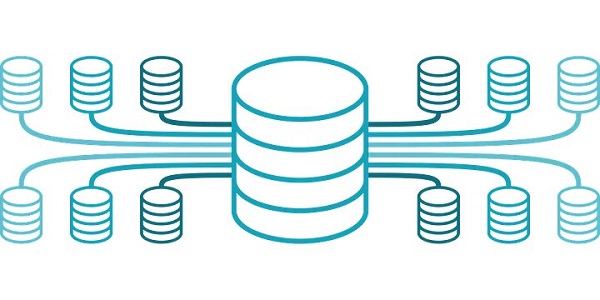Introduction: Mastering Cloud SQL with JAVA
In the present fast-paced digital area, many enterprises need to have the competence to handle and grow their database substructure in a unified way to preserve a competitive benefit over their competitors. Cloud SQL is an interpersonal database service that is entirely handled. It offers programmers a strong explanation that lets them make apps that are both climbable and harmless.
The relocation to Cloud SQL, on the other hand, may be a thought-provoking mission, predominantly for those who are not acquainted with cloud-based folders. An all-encompassing post might be a real lifesaver in circumstances like these.
Knowledge about JDBC
Java Database Connectivity, normally called JDBC, is an important technology for Java developers who need to interconnect with relational databases. It is needed to have a compact grasp of JDBC to safeguard efficient database connectivity, regardless of whether you are developing a mobile application, a desktop program, or a web application.
Providing Java programs with the capacity to communicate with databases is the aim of the Java API (Application Programming Interface) called Java Cloud SQL JDBC. It acts as a connection between the Java programming language and many different database management systems (DBMS), such as MySQL, PostgreSQL, Oracle, and SQLite, among others.
Introduction to Cloud SQL and the Importance of Migrating to Mastery
To begin the process of selecting a migration strategy, we must first identify the many application-specific considerations that will be taken into consideration. It is usual for buyers to examine the following questions:
- What kind of time will it take to migrate?
- During the migration, will my applications continue to function normally?
- How difficult is it to assist with such a move, and how hassle-free is the process of rolling back?
Your ability to tolerate downtime, as well as the frequency with which you update your database, are both factors that might influence your decision to go with a one-time migration. This strategy makes use of several distinct alternatives, each of which has a different degree of process complexity, ranging from the least complicated option, which is to import database backup, to the average difficulty of Snapshot Replication.

Image: towardsdatascience
The Cloud SQL is not an easy technique, and it takes an all-inclusive grasp of the expertise and the chances it grants. A procedure that takes careful groundwork, implementation, and testing is needed to effectively change your current database to the cloud. It is not as easy as just copying and pasting the database content. The consequence of creating the transition to mastery developed to be apparent at this point.
Setting up the Cloud SQL Instance
Establishing a Cloud SQL instance is an imperative stage in the method when you start to set on the journey where you have to move your database to the cloud. Keep in mind this is the place where you have to make a unique example of cloud SQL. It will act as a basic part of your database. In this stage, it would be requisite to select an appropriate database engine, point out the type of instance, and arrange configuration settings to fit your requirements.
In the first place, it is essential to move to the Cloud SQL page in Google Cloud Console. Then, you have to press the Create instance button. When you do this, it will help you go to a page that will help you choose the engine of the database you wish to make use of. Cloud SQL keeps up a plethora of famous engines such as SQL server, PostgreSQL, and MySQL. In this guide, you would need to use a MySQL server. Bear in mind that the steps you follow will be akin to other engines.
When you choose an engine for the database, you would be required to spot the exact type of instance. When you do this, it will help you decide on the right resources that are assigned for your insurance. It comprises memory, CPU, and storage. Users can select from a wide variety of types of instances, such as DB-N1-2″ or DB-N1-1″. You need to be certain to select a particular type of instance that would suit your needs as well as your execution.
Design the settings of the instance that would fit your requirements. It comprises establishing the name of the instance and the users’ expertise. It is necessary to spot the specific locations of the instances and extra settings, such as the type of storage and size of the instance.
Benefits of Azure Cloud Migration for Businesses
Quick digitalization
Azure migration enables businesses to adapt and enhance their organizational processes and apps by accessing a variety of digital knowledge. This is one of the benefits of rapid digitalization. It is obvious that “rapid process digitization”, as described by McKinsey, has the potential to provide carriers with immediate benefits in the form of cost reduction and reduced mistake rates. Furthermore, some businesses may find it simpler to adjust to the unexpected uncertainty that has arisen.
Cloud Cost Optimization
It guarantees that the cloud resources that are most suitable and cost-effective are assigned to each workload or application for which they are being used. It strikes a balance between the needed performance, cost, compliance, and security criteria to guarantee that cloud expenditures are optimum and suitable for the needs of individual organizations.
Creating Innovations
Modernizing with Azure eliminates the majority of the onerous tasks that are involved in structuring your information technology infrastructure and networks, which allows you to build more innovations. The process of optimizing costs in the cloud is dynamic, meaning that it adapts to changing application needs as well as continually shifting cloud pricing and service offering possibilities.
Cloud cost optimization necessitates the use of precise measurements, analytics, and automated technologies. This is because cloud environments are extremely complicated. This makes it possible for your company to focus on increasing revenue, modernizing, and creating value for its customers. Additionally, innovative businesses place a substantial emphasis on diversity and inclusion on an individual level.
Agility in the Industry
Agility may be defined as the dynamic capacity of an organization that enables it to effectively handle variations and uncertainties in the surrounding environment. Businesses can reply almost immediately to the issues and needs of end-users. The ability to achieve this agility is made possible by the hosting of apps on Azure. To establish a favorable image among customers, it is essential to have staff members who have received enough training.
Also, they can able to deal with challenging individuals and settle complaints from customers. The resources, infrastructure, provisioning, and de-provisioning of companies may be immediately scaled up or down according to the requirements of projects.
Aspects to addressed while transferring workloads to Azure Cloud Infrastructure
Application Architecture
Before you migrate, many firms must examine all of the application’s design shapes not only to comprehend compatibility but to simplify the optimization of the cloud system. The architecture serves as a foundation or blueprint for the development of an application. An application architecture defines the patterns and procedures used to develop and construct an application. The architecture provides a roadmap and best practices for designing an application, resulting in a well-structured app. Software design patterns may help you create an application. A pattern represents a problem-solving method that may be repeated.
Security
Not just making contacts, companies are required to accurately plan the implementation of safety policies to ensure that the important phases of safety are successfully met. A few policies comprise Individuality and Access Management (IAM), data fortification, OS arrangement, system encrypt, and safety. Industries could appoint Azure Cloud Migration Services Company to establish safety planning and incorporate physical or computer-generated employs that stability of the cloud architecture and mollify acquiescence values.
Resource Utilization versus Obtainability
Resource allocation is a critical element in project management, particularly during the resource planning phase. An organization selects where and how to spend its resources to create things or provide services. Resource utilization allows you to determine if an individual is effective or not, as well as whether someone is over or under-burdened. A supervisor or manager may determine their team’s total productivity. Businesses may improve their configuration management to ensure that systems work in compliance with standards throughout time.
Licensing
One of the main thoughts before database to Cloud SQL with Java is to check whether your app is qualified with a complete infrastructure footprint. This study could assist firms in reducing the cost of disasters. As software true-ups and audit performance are growing reliably nowadays, your businesses must remain amenable to the terms and conditions of license agreements before starting a migration.
Understanding the benefits of Cloud SQL for Java applications
Business Continuity
Cloud SQL makes sure that you come up with data hold-up and data retrieval possibilities. Cloud SQL would assist you in recovering the app data flawlessly in times of tragedy or data loss. This will help you to carry on with the processes without having to face all the challenges.
Security and Compliance
Encrypting data and firewall safety are both included as standard functionality with Cloud SQL. It comes with an RDBMS safe database service, which improves the concentration of private interconnections via user-controlled system access and verification.
Seamless Integration with Java
An additional important advantage of Cloud SQL is the all-in-one incorporation with Java, making it simple to begin with the migration. With Cloud SQL, you can link to your database with the help of normal SQL syntax and influence the power of Java to interrelate with your data. This means that you can make use of the present Java skills and tools to shape and organize your app with negligible interruption to your expansion workflow.
Offers Advanced Features
Additionally, Cloud SQL offers a variety of unconventional components and tools, like database encryption, reviewing, and access controller, to safeguard where the data is not in danger and acquiescent with applicable guidelines.
Bottom Line
One of the most successful Java web application development company recognizes that a well-constructed online platform may be the determining factor in understanding the kind of success that any firm achieves. Through the use of this newly acquired information, you will be able to simply expand your application, enhance its performance, and take advantage of the returns that cloud-based data management offers.





